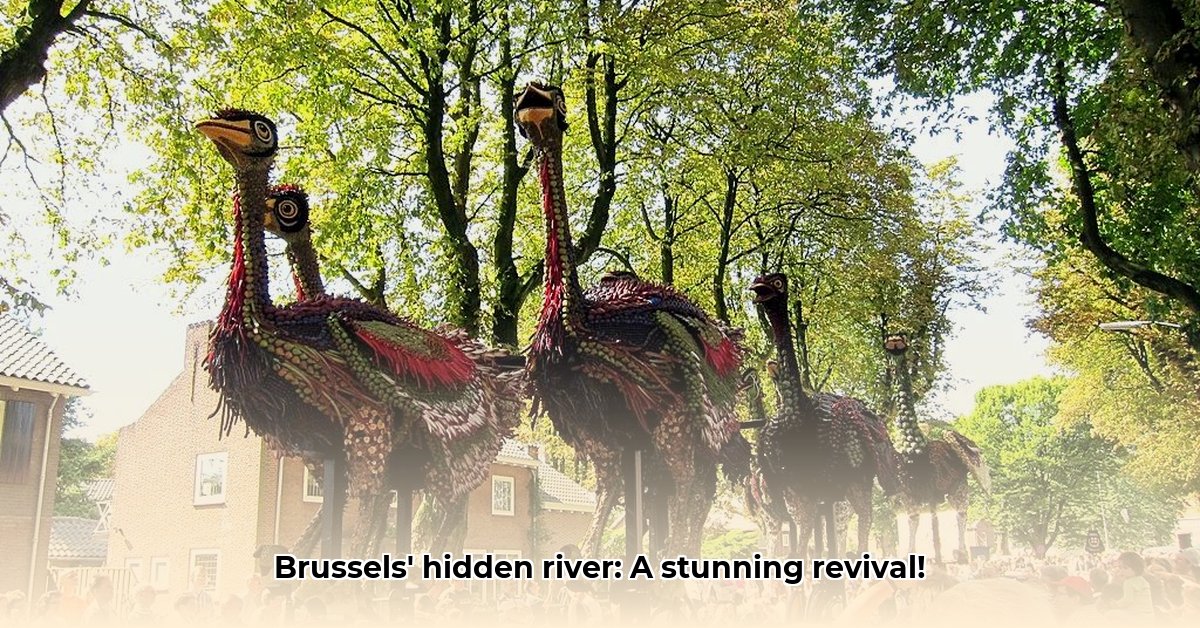
Welke Rivier Stroomt Door Brussel? The Zenne's Incredible Transformation
So, you're asking yourself, "Welke rivier stroomt deur Brussel?" (Which river flows through Brussels?). The answer is the Zenne River, and its story is far more than just a simple geographical fact. It's a gripping tale of environmental degradation, remarkable resilience, and a testament to the power of human collaboration in the face of seemingly insurmountable challenges. The Zenne's journey mirrors many urban waterways – a once-thriving trade route reduced to a toxic drain, and now, remarkably, on its way to a revitalised future.
From Life Blood to Industrial Drain: The Zenne’s Fall
For centuries, the Zenne served as Brussels' lifeblood. Imagine barges laden with goods navigating its currents, a vibrant hub of activity. However, the Industrial Revolution brought a drastic shift. Untreated industrial waste was carelessly dumped into the river, turning its waters foul. By the 1990s, the pollution was so severe that the Zenne famously caught fire (a truly shocking occurrence)! How could something so vital become so toxic? It's a sobering account of unchecked industrialisation. Have you ever seen pictures? The sheer scale of the problem was devastating.
A City's Attempt at Concealment: The Concrete Cover-Up
Instead of tackling the root cause, Brussels attempted to hide the problem—literally. Large sections of the river were encased in concrete and asphalt, creating a concrete cap. While this might have appeased short-term anxieties, it only masked the underlying pollution and exacerbated the ecological damage. The Zenne, once a symbol of urban life, became a shameful secret, buried under layers of concrete and neglect. The question is, could the mistakes of the past be undone? How did Brussels start to address this major environmental problem, and what were the obstacles they faced?
A Long and Winding Road to Redemption: The Zenne's Comeback
The Zenne's resurgence isn't a quick fix; it's a story of persistence and collaboration. It's involved extensive works: building state-of-the-art wastewater treatment plants capable of filtering pollutants (removing harmful substances); initiating ambitious clean-up projects to remove decades of industrial waste; and, importantly, changing the way we think about water management in urban environments. Isn't it fantastic that you can now see fish returning to some parts of the river? It’s a powerful testament to nature's resilience and human determination. Yet, this ongoing process demonstrates that environmental recovery is a marathon, not a sprint. What other challenges remain?
Three Regions, One River: The Challenge of Collaboration
One major obstacle has been the Zenne’s location, it flows through three distinct Belgian regions: Flanders, Wallonia, and Brussels. Each has its own water management policies, frequently making unified solutions difficult. This fragmented approach highlights the need for cohesive planning and shared responsibility. It's a powerful metaphor for the challenges in collaborative environmental management; many hands contribute to the job, but making them all work together smoothly is essential. Professor Anya Petrova, Head of Environmental Policy at the University of Leuven, notes: "The Zenne's revival underscores the importance of trans-regional cooperation. A shared vision is crucial to achieving lasting progress."
A Collaborative Future: Rebuilding the Zenne Ecosystem
What does the future hold for the Zenne River? It requires continuous commitment and collaboration. Regional governments must align their strategies, water management agencies need to equip themselves with advanced technologies, local communities need to remain engaged, and businesses need to adopt sustainable practices. The Zenne's restoration proves that even severely polluted rivers can be revitalised, but ongoing efforts are essential for long-term success. The Zenne’s recovery underscores the importance of seeing rivers not just as drainage systems, but as valuable natural assets.
The Zenne's Revitalisation: A Timeline of Transformation
| Phase | Approximate Timeline | Key Actions | Results | Challenges |
|---|---|---|---|---|
| The Industrial Age | 18th-20th Centuries | Industrial waste discharge; river canalisation; covering sections | Severe pollution; loss of natural functions; ecological damage | Lack of environmental regulations and awareness |
| Crisis and Early Action | Early 1990s | Zenne catches fire; initial wastewater treatment plants built | Gradual water quality improvement; some early signs of ecological recovery | Limited inter-regional cooperation; incomplete wastewater treatment |
| Ongoing Restoration | Present Day | Enhanced wastewater treatment; public awareness; concrete barrier removal | Continued water quality improvement; fish returning; increased biodiversity | Sustained inter-regional cooperation; managing emerging pollutants; balancing urban needs with ecological protection |
The Zenne's story is a powerful reminder of the resilience of nature and the transformative power of human collaboration. It’s a story of hope – showing how, with determination and a comprehensive approach, we can restore even the most severely damaged environments. It's not simply about cleaning up a river; it's about building a sustainable future for Brussels and its people. The Zenne’s journey continues, and it’s a story worth following.